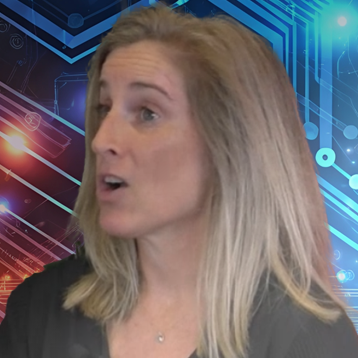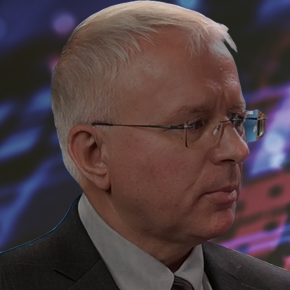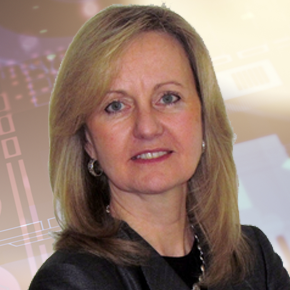May 27, 2022
Selling Sustainability in Aerospace

Transcript
Back in the days when engineers estimated costs with paper sketches and a slide rule, a manufacturer’s liability ended when the product shipped out the door. Today, however many manufacturers are finding they can no longer pass on the lifecycle cost of their products to consumers. The buyers of aircraft, industrial equipment, and other long lifecycle products increasingly have so much information at their fingertips that they are forcing manufacturers to take responsibility for their products full cost of ownership. How can manufacturers win in this game?
My guest today says it takes getting serious about product lifecycle dynamics.
Bernard Hensey has spent his career thinking about long lifecycle products. He developed new businesses for Cummins engines and sold aircraft systems for Pratt & Whitney before coming to Boeing, where he held several leadership positions, including CEO of Boeing Shanghai, VP Fleet Manager, and VP for Commercial Businesses with Boeing Global Services. Today, he helps companies leverage data to effectively manage change. Bernard Hensey, welcome to the podcast.
Bernard Hensey: Nice to talk to you, Leah.
Leah Archibald: Let’s start at the beginning. Can you explain to me what you mean when you say product lifecycle dynamics and how this relates to a product’s cost?
Bernard Hensey: Sure. Back when I started engineering, when buying a large capital good you generally had an evaluation team consisting of the engineering department and the user. Together they would go out and pick the best product. Life has changed so much since then! Now we have a situation where when you acquire a major asset for an organization, there’s many more constituents evaluating the acquisition. There are the people who will be actually be operating the equipment—they’re involved in the decision—as well as the maintenance department, and the finance department who are looking at the cost of that equipment over time.
This has been particularly true in recent years as distributors have started to introduce financing as part of the asset package. A lot of people are buying assets nearly as a service. So, the monthly fee—the monthly pay for financing—or the monthly fee for operational costs becomes critical. As we get into this everything as a service world, the lifecycle performance of your product is getting more and more important.
Leah Archibald: Can you give us an example that grounds this phenomenon in the world of aviation?
Bernard Hensey: Yeah, well, look, I was involved in many aircraft programs at Boeing. I remember one particular airplane which was designed new. It was a relatively new aircraft brought into production. My role within the organization was to help the airlines to operate the aircraft. And the biggest issue we had was a forward cargo refrigeration pump. It was not high on the technology specs in terms of the design of the airplane. But it had a huge impact on the operational performance of the aircraft. And as we were helping the airlines manage those airplanes, this one component became the bane of our lives. We had to work closer with the supplier to ensure reliability. We had to question them in terms of their cost impacts. And we had to work with that supplier as a partner to give them the large amount of knowledge we were accumulating about how that component was working in the field.
It just shows that on a multimillion-dollar airplane, sometimes it’s the smallest components that can drive the cost up. When engineers tend to look at things, they look at the design components that are technically novel, or the things that have changed considerably from one version of the product to the next. But sometimes it’s the trivial items that bite you.
Leah Archibald: This refrigeration component was not something that added a lot of cost to the airplane upfront, but over the lifecycle it’s upping your cost if you’re on the hook to be servicing that airplane.
Bernard Hensey: Exactly. But how do you bring that data to the designer? How do you bring that to the upfront consideration of the product manager when they’re pulling together the design and the configuration of the product? That’s really critical.
Leah Archibald: Answer your own question. How do you bring that data to the designer? I imagine there are quite a few people on your team at Boeing. How do you surface that data to the right people?
Bernard Hensey: Well, unfortunately, in a traditional space you tend to have to take a long journey. You usually have to go back down through the suppliers and try to find out the manufacturing processes they use, the locations they’re manufacturing in, and get them to cooperate with you to give you some data. Then you go back to your design people and try and figure out the issues and answers.
There are other options emerging today, and this is why I’m very excited to be working with aPriori. Because when you have 3D data from your original design in digital format, now there are ways to synthesize that data to create this type of knowledge upfront. Then as you evaluate how your products are performing in the field, you can synthesize that data into something really useful for your customers in terms of operational cost.
Or even with the designer, if you place operational costs and operational performance as a priority in your design, you can actually start feeding that data directly to the designer. It’s a great application of big data. It’s a great way of synthesizing the digital thread of your product as it goes from design through to operation. And it’s a great way you can create a learning organization that can actually iterate based on this type of information in the future.
Leah Archibald: Now, tell me a little bit more about the product lifecycle dynamics rolling into the price of the product for the customer.
Bernard Hensey: When buyers are evaluating a product now, they’re tending to use overall lifecycle cost analysis, like a discounted cash flow approach to the acquisition of capital goods. So, they’re gathering data on the performance of your product in the marketplace. Now in aerospace, there’s a lot of data available—sometimes too much data, right? And it’s widely distributed. So, as you’re selling your product to start with, how you line up the operational performance and share that data with your customers is a critical point.
The second point is evaluating how the overall supply base is controlled and how the fulfillment agreements are in place with your suppliers.
And finally, there is reliability and performance. What components—like I mentioned earlier with the refrigeration issue—what components cause the biggest issues?
Overall, these data sets need to be evaluated within a discounted cash flow. I’ve worked for a number of aerospace companies. In capital goods expenditures in the aerospace industry, we found generally that a dollar in the aftermarket could affect the purchase price up to $0.70. So, as you model all these different dynamics, you need to understand how the cost of the operation and the cost of the lifecycle of your product will have an impact on its purchase price by the way your customers will evaluate it.
Leah Archibald: Can you make data a competitive advantage here? As you’re saying, your customers are going to have access to a lot of data and all that data isn’t coming from you. If you have more control over your data in the marketplace, is there a way that you can share your data that gives you a competitive advantage?
Bernard Hensey: That’s a great question. I think this opens up a key competitive advantage as you talk about your marketing mix. A progressive view of the distribution of your data can also be a competitive advantage. If you have a third-party supplier providing your components, there’s nothing better than sharing the operational data from your customers to create dynamics with your supplier. Oftentimes the customers of your products are very reticent to release their operational data. A lot of times I’ve heard of manufacturers not having the granularity of data that they do need and nearly begging their customers to give them the data on how their products operate.
If you create an open data rich environment around the mix of how you sell your product, that can create a totally different dynamic with your customers. You can create an open trade where you say: “Look, we’ll share this, and if you share what data you have, as partners we’ll optimize the performance of this product over time.” And then you could feed that data back to your design engineers. So as your revisions go out, it creates a better and better product.
That healthy, constructive view to data can have a huge advantage.
Leah Archibald: Talk a little bit more about this idea of product as a service. How can lifecycle costs roll into the price that you set for your product?
Bernard Hensey: Look, this is an area I’m keeping a really close eye on at the moment. It’s particularly affecting aviation. The percentage of aircraft now that are actually distributed by leasing companies is really large. Airlines have access to aircraft nearly on a per month cost basis. Then you combine that with the tech industry approach to capital goods where more and more software innovation is pushing into the capital goods market. So, if you don’t look at product as a service, you’re going to have to in the future, because you’re going to have a competitor knocking on your door who’s going to be using these techniques.
Product as a service creates a very good dynamic for the manufacturer, because you’ve got to eat your own dinner. You actually have to live with the product that you designed. And customers like that. The old days of making something—designing something brilliantly and just letting it go into the marketplace—are gone. I think we need to own our products as they get into the marketplace, and then work with our customers as partners on how those products perform.
Leah Archibald: I think consumers are cultivating the desire for that whether we want to or not. This morning I dropped a pepper grinder and it broke, and I was like: What??? But I just bought that! I had this expectation in my mind of pepper grinder as a service. Like: Who’s going to come in and replace that? Where’s my SLA for that pepper grinder?
[laughter]Bernard Hensey: Yeah, those are our expectations. But there’s one other dynamic which is also really important, and that’s the sustainability agenda. Increasingly, it’s also about how the end of life for your product is managed. You’ve lost something if you’ve lost connection to your customers on the operation of your product over time, especially if future legislation ties the manufacturers to the overall complete lifecycle, putting a cost on sustainability.
Plus, now customers are beginning to expect it. I don’t know what happened to your poor pepper grinder…
Leah Archibald: It went into the trash can.
Bernard Hensey: But if that’s a generator, if that’s a major capital good, customers are expecting the manufacturers to be involved in the sustainable replacement of that product. That’s the ultimate view of the end of the life cycle. How can you create markets to use serviceable components after the disposal of your product? How can you deal with hazardous goods within your product? This idea of service being connected to your product lifecycle is something that’s here to stay.
Leah Archibald: If we pull back to 30,000 feet, we know that manufacturers are facing two major dilemmas regarding their product line: 1) How to make it, and 2) Where to make it. From the perspective of product lifecycle dynamics, how do you think executives should go about addressing these questions?
Bernard Hensey: When you look at lifecycle, those words have a different meaning. How to make it is: what are the tradeoffs you make as you design the product for production versus how you design the product for operation and performance in the field. You need data to make the right decisions as you look at that.
Then when you go on to where to make it, that word is a little bit more dynamic. Where could mean how you configure your supply chain. It’s not just geographic. Do you use third party subcomponents? Do you make it yourself? What are the supply agreements? How do you share data through that supply chain? How do you let your customers have access to that data? So, the where becomes a much bigger where.
Leah Archibald: Not just where geographically, but where in the cloud? Where is the access to that data? That’s an appropriate answer. In the clouds is an appropriate place to end for someone who spent their lifetime in the aviation industry. Bernard Hensey, it’s been a pleasure to talk to you. Thank you so much for joining me on the podcast today.
Bernard Hensey: Thanks, Leah. Very much enjoyed our conversation.







